Bandipur is a picturesque hilltop village located in the Tanahun District of Nepal, known for its well-preserved cultural atmosphere. It had a population of 15,591 people in 3,750 households according to the 2011 Nepal census.
It is situated at 27.56 N, 84.25 E, and is a mountain 700m above the Marsyangdi River Valley, 143 km west of Kathmandu and 80 km east of Pokhara. Connected since 1998 by an 8 km access road from Dumre, the road is 200m long. It was conquered in 1768 by Prithvi Narayan Shah which was established as a trade point by Newar traders, bringing their cultural heritage and architecture to the malaria-free region.
Bandipur, a trading center in Nepal, was once a Magar village in the early 19th century. Its popularity was during the Rana times (1846-1951) when it was granted special permission to have its library. However, the 1970s saw a decline in trading due to the construction of the Prithvi Highway and the relocation of the district headquarters.
The town experienced turmoil during the first demonstrations for democracy in Nepal, leading to the destruction of the garrison and administration. Despite this, some relics of Bandipur’s wealthy past remain, such as the covered veranda on the main street and the library, which was renovated in 2000.
This place is known for its well-preserved Newari architecture and culture. Located at 1,030 meters above sea level, it was a trading center during the 18th century. Today, it’s a popular tourist destination with stunning Himalayan Mountain views, traditional architecture, and a peaceful atmosphere. Attractions include Bindabasini Temple, Khadga Devi Temple, and Tundikhel viewpoint.
Historical Significance Of Bandipur
Bandipur holds historical significance as an ancient trading hub dating back to the early 19th century. Originally established by Newar traders from Kathmandu Valley, it served as a crucial link between India and Tibet. The village grew due to its strategic location along trade routes, influencing its cultural and architectural development.
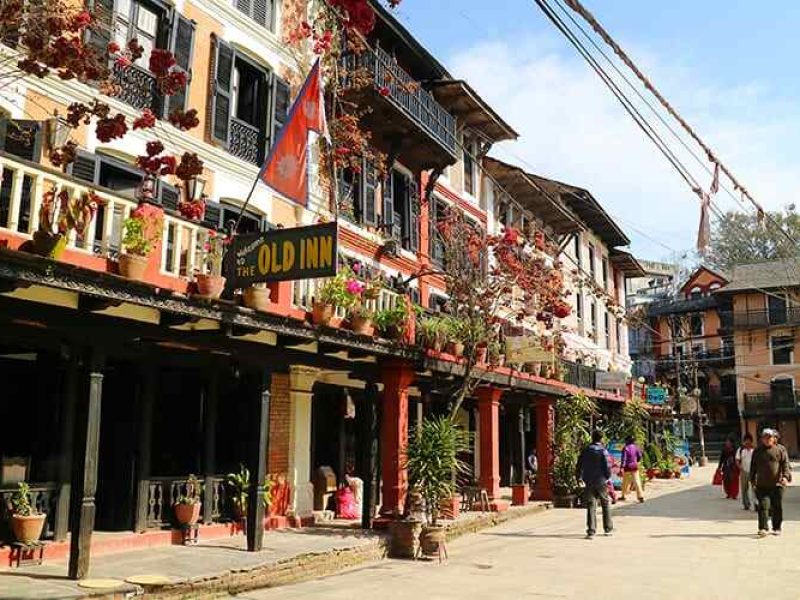
While traditional trade has declined with modern transportation, Bandipur’s preservation efforts have transformed it into a cherished destination, showcasing its rich history through well-preserved buildings and cultural heritage. Today, it stands as living proof of Nepal’s historical and cultural evolution.
Architectural Marvels Of Bandipur
Bandipur presents several architectural marvels that reflect its rich cultural heritage. The village showcases detailed Newar architecture, characterized by complex carved wooden windows, doors, and traditional buildings decorated with detailed artwork.
One of its notable places is the Bindhyabasini Temple, dedicated to the goddess Bindhyabasini, renowned for its complicated wood carvings depicting deities and mythical creatures. Tudikhel, a large open ground, serves as a central gathering place surrounded by old government buildings and traditional homes.
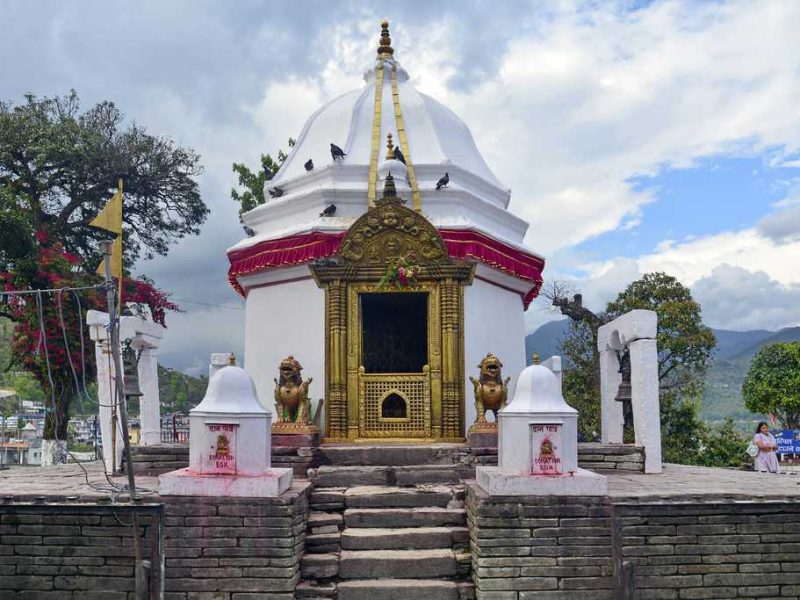
Adding to the village’s architectural charm are Raniban and Rani Mahal, constructed in the traditional Newari style, which contributes to its royal historical legacy. Another significant site is the Thani Mai Temple, offering a picturesque view of Bandipur and the distant Himalayan peaks while serving as a modest yet culturally important religious center.
Bandipur’s attraction is further enhanced by its well-maintained stone-paved streets and public squares that connect various architectural wonders, creating a unified aesthetic. The village’s dedication to preserving its architectural heritage is evident through ongoing restoration initiatives.
When To Go To Bandipur?
Bandipur is best visited from September to November and March to May for dry, mild weather, stunning Himalayan Mountain views, and local festivals. From March to May, the weather is warm and pleasant, with rhododendron flowers covering hillsides. The monsoon season brings lush greenery, while winter months offer cool, dry weather with temperatures dropping below freezing at night.
This place offers a blend of nature and culture, with peak tourist flow in the Spring, offering clear skies and breathtaking views, and lower visitor numbers in winter due to snowfall and cold weather.
Majestic Views Offered By Bandipur
The majestic views offered by Bandipur:
- Panoramic Himalayan Vistas: This place provides stunning views of the Himalayan mountain range, offering a picturesque backdrop of snow-capped peaks.
- Scenic Sunrise and Sunset: The village is renowned for its spectacular sunrise and sunset views over the Himalayas, creating a breathtaking sight for visitors.
- Valley and Village Landscapes: From various viewpoints in Bandipur, visitors can admire the lush green valleys and traditional village landscapes nestled amidst the mountains.
- Thani Mai Temple Viewpoint: The Thani Mai Temple offers a serene viewpoint where visitors can enjoy sweeping vistas of Bandipur and its surroundings.
- Natural Beauty and Serenity: Bandipur’s charm lies in its peaceful environment and natural beauty, making it an ideal destination for nature lovers and photographers alike.
These points capture the spirit of the majestic views that Bandipur has to offer, making it a memorable destination for travelers seeking natural beauty and tranquility.
Cultural Richness Offered By Bandipur
Bandipur boasts a rich cultural tapestry. Here are some points highlighting the cultural richness offered by Bandipur:
- Newar Architecture: Wooden carvings decorated Bandipur’s traditional buildings, and showcased the Newar community’s craftsmanship.
- Historic Temples: Ancient sites like Bindhyabasini Temple feature detailed woodwork and hold religious significance.
- Festivals: Dashain, Tihar, and Buddha Jayanti are celebrated, providing a glimpse into Nepalese traditions.
- Cuisine and Hospitality: Authentic Newari food and warm local hospitality welcome visitors to experience the village life.
- Arts and Crafts: Local artisans craft pottery, textiles, and metalwork, preserving cultural heritage.
- Community Practices: Bandipur maintains traditional social norms, reflecting daily life and values.
- Cultural Events: Folk performances and music events enrich the cultural experience for visitors.
These highlights make Bandipur a captivating destination for exploring Nepal’s vibrant cultural heritage.
Adventure And Exploration In Bandipur
Bandipur has become renowned for its diverse adventure offerings, attracting fans of hiking, trekking, paragliding, rock climbing, and cave exploration. Nestled in the middle of scenic surroundings, visitors can enjoy panoramic views of waterfalls, neighboring villages like Siddha Cave and Ramkot, and the majestic Himalayas.
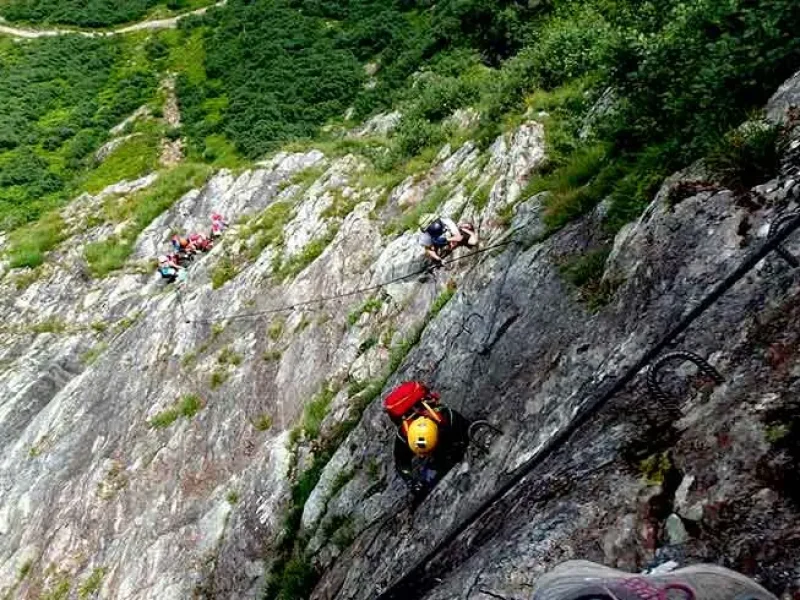
Paragliding in Bandipur promises refreshing flights with breathtaking sunrises of the Himalayan range, while rock climbing opportunities cater to both beginners and experienced climbers. Siddha Cave stands out as a captivating destination for spelunkers, featuring expansive caverns decorated with impressive hanging formations and cone-shaped formations.
The Bandipur trek offers visitors a chance to explore the area’s natural beauty, with trails leading through picturesque landscapes, and traditional villages, and offering breathtaking views of the surrounding mountains. Whether seeking adrenaline-pumping activities or serene natural beauty, Bandipur offers a compelling adventure experience for all types of travelers.
Sustainable Tourism Promoted In Bandipur
Bandipur is committed to sustainable tourism practices. Residents participate in conservation efforts to preserve the village’s natural and cultural heritage. Eco-friendly practices include waste management programs and eco-friendly accommodations.
The village also focuses on conserving historical and natural sites through restoration projects and forest protection. Encourage visitors to engage in responsible travel behaviors by respecting local customs, supporting local businesses, and minimizing waste. This unique destination celebrates its history, culture, and natural beauty while promoting a sustainable future.
Where To Stay In Bandipur?
Bandipur offers various accommodation options, from basic to high-quality lodges, catering to budgets and needs. Inquire about different hotels before making a final decision.
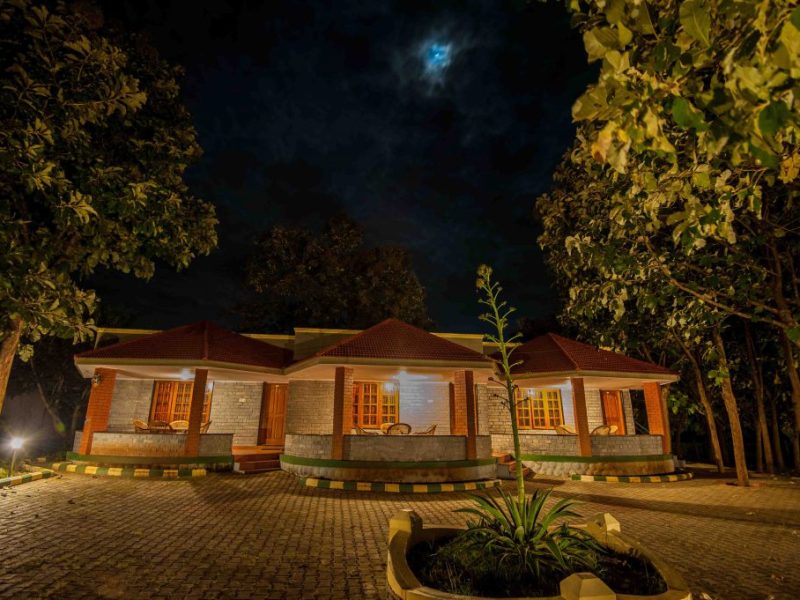
This place offers various accommodation options to suit different budgets and preferences. Popular choices include Old Inn Bandipur, Gaun Ghar Hotel, Bandipur Mountain Resort, Bandipur Homestay, and Bandipur Village Resort.
These hotels offer comfortable rooms, rooftop terraces, large rooms, restaurants, outdoor pools, and gardens with views of the mountains. Some eco-friendly guesthouses and resorts also offer peaceful retreats and outdoor swimming pools.
What To Do In Bandipur?
Bandipur, a renowned hilltop destination in Nepal, presents numerous attractions that draw tourists from far and wide. Visitors can explore its charming alleys, and ancient temples, and enjoy stunning panoramic views of the Himalayas from its balconies. Here are the places to see in this place listed below:
1. Thani Mai Temple
Thani Mai is a Hindu temple on Gurunche Hill in Bandipur, offering panoramic views of the Himalayas and a serene atmosphere. It’s a short hike up handcrafted stairs, with lookout spots along the path. It’s a great spot to watch sunsets and sunrises and is also a religious site.
2. Khadga Devi Temple
Khadga Devi Temple, located near Bandipur town, is a significant Hindu temple with a unique roof design. It houses a sacred Khadga, wrapped in layers of cloth, believed to be a gift from Lord Shiva. The Khadga is worshiped as a symbol of female power and is believed to invite instant death by vomiting blood.
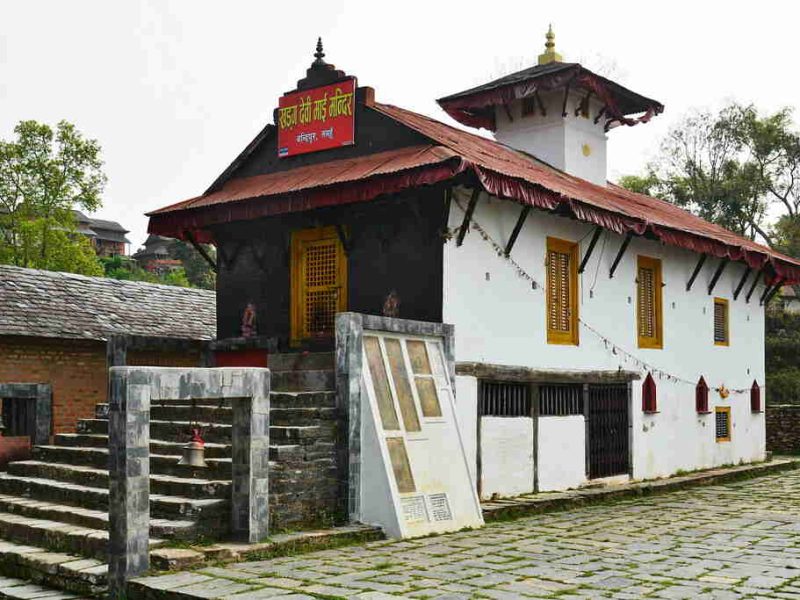
The temple is open to devotees only once a year during Dashain, the Hindu festival. Visitors are not allowed to enter the temple due to religious reasons. The temple’s unique and beautiful view is less impressive than Thani Mai Temple.
3. Tundikhel
Tundikhel, a viewpoint outside Bandipur, offers panoramic views of surrounding hills and mountains, perfect for sunrise or sunset viewing. Originally a trade area, it now serves as a vantage point, offering stunning views of Dhaulagiri, Manaslu Circuit, Machhapuchhare, Langtang, and Ganesh Himal.
4. The Siddha Cave
Siddha Cave, Nepal’s largest cave, boasts dimensions of 50 meters in height and 437 meters in depth. Located amidst lush rainforests, it is a famous place for hiking lovers, offering a captivating inner area that spans 0.5 kilometers. Accessible through a scenic 2-hour trek, visitors can explore its expansive chambers and unique geological formations.
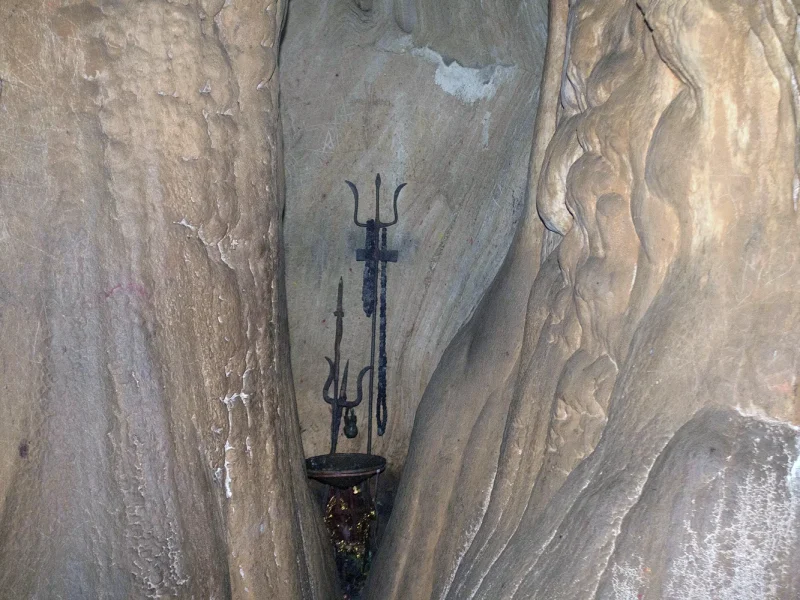
Guided tours are available for 200 NPR per person, with visitors advised to bring flashlights or headlamps for illumination. Siddha Cave can also be reached via Durme Road, providing convenient access for adventurers and nature admirers alike.
5. Padma Library
The Padma Library, located in Bandipur Bazaar, showcases the power of Bandipur during the Rana era. Ranas granted special permission for its construction, making it renowned for its architecture and historical significance.
Frequently Asked Questions (FAQs)
1. Where is Bandipur located?
Bandipur is situated on a hilltop at an elevation of 1,030 meters, approximately midway between Kathmandu and Pokhara. It is about 143 kilometers west of Kathmandu.
2. How do I reach Bandipur?
Bandipur is located approximately 143 km west of Kathmandu and 80 km east of Pokhara. It is accessible by road, with an 8 km access road from Dumre. Buses and private taxis are available from major cities like Kathmandu and Pokhara.
3. Is Bandipur suitable for family trips?
Yes, Bandipur is a family-friendly destination with activities and attractions suitable for all ages. Families can enjoy sightseeing, cultural experiences, and nature walks while experiencing the peaceful atmosphere of the village.
4. How can I experience local culture in Bandipur?
To experience local culture in Bandipur, visitors can explore traditional Newar architecture, attend festivals like Dashain and Tihar, visit local markets, and stay in guesthouses to interact with residents and learn about their daily lives.
5. What should I pack for a trip to Bandipur?
It’s advisable to pack comfortable walking shoes, light clothing for daytime, warmer layers for cooler evenings, a flashlight or headlamp for cave exploration, and essentials like sunscreen and insect repellent.
6. How can visitors contribute to sustainable tourism in Bandipur?
Visitors can contribute to sustainable tourism in Bandipur by respecting local customs and traditions, supporting local businesses, minimizing waste, participating in eco-friendly activities, and engaging in responsible travel practices.

Comment (0)